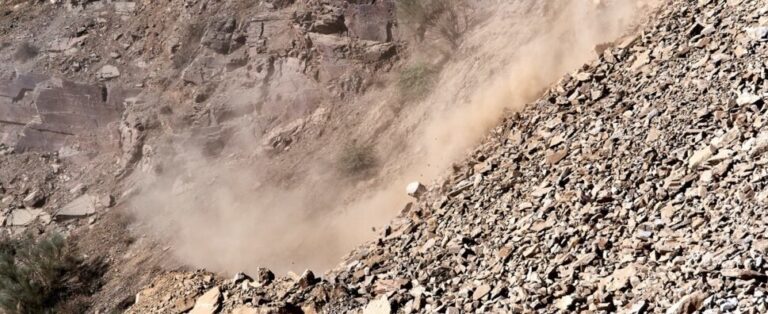A new study by the CMCC Foundation, the Euro-Mediterranean Center on Climate Change, has used a new generation of atmospheric models to improve the performance of early warning systems for landslides in southern Italy.
The study, Exploring ERA5 reanalysis potentialities for supporting landslide investigations: a test case from Campania Region (Southern Italy), identifies the potential of the fifth generation of atmospheric models (known as reanalysis dataset ERA5) developed by the European Centre for Medium-Range Weather Forecasts for improving the performance of early warning systems used, for example, by the Civil Protection (Protezione Civile).
The Campania region in southern Italy is vulnerable to landslides due to the fact that many slopes in the area are covered with layers of volcanic soil, the result of repeated eruptions over the course of millennia. On these slopes landslides are usually caused by a combination of two factors: the antecedent slope wetness conditions and the triggering condition represented by an intense precipitation event. According to the CMCC Foundation, the early warning system currently used by the Campania region uses the latter as the only indicator, ignoring the antecedent conditions of the soil.
As a result, every time a precipitation event of a certain intensity is forecasted, whatever the state of the ground at that specific moment, the system returns a state of alert, pre-alarm or alarm. This increases the likelihood of false alarms.
“Reanalyses are atmospheric models, the same ones that are used for forecasting. But they are usually used in back-analysis to reconstruct past weather conditions,” explained Guido Rianna, CMCC researcher and co-author of the study. “Because of this characteristic, the purpose of reanalyzes is not to forecast, but to homogenize, from a spatial and temporal point of view, data from different in situ monitoring systems – such as weather stations – or from remote sensing, such as satellites.”
ERA5 has a much better spatial resolution than the previous ones, providing atmospheric variables on grid cells of about 30km in size. In addition, it is possible to access free daily updated data through the Climate Data Store of the Copernicus Climate Change Service.
This data ranges from 1979 up to five days before the consultation. Such a short time of data release allowed the authors of the study to assume – and then verify – a good performance of the tool not only for back-analysis studies but also for operational purposes such as the development of early warning systems.
“We first verified the reliability of the ERA5 reanalysis in reproducing rainfall histories leading to landslide events that actually occurred in the studied area,” said Alfredo Reder, CMCC researcher and first author of the publication. “Next, we analyzed the specific landslide event that occurred in Nocera Inferiore (Campania) on March 4, 2005. We verified that, at that event, the soil moisture estimations offered by ERA5, although not free of constraints and limitations, would have been able to observe a very high value in terms of water content along the entire cover. Thus, we have been able to take the final step of evaluating the possibility of using these reanalyzes operationally for an early warning system.
“In the last phase of our research, we verified that the ERA5 datasets, if used as a proxy to support a decision, could improve the reliability of the forecasting model currently used in Campania, because they can provide information on antecedent slope wetness conditions, which are a predisposing factor for a landslide event,” Reder added.
The results of this research apply to the case of pyroclastic landslides, which are characteristic of the studied area. The next step will be to verify the suitability of ERA5 reanalyzes for the same purpose but in the case of other soil types, such as clay soils leading to slow landslides, which are characteristic of various areas of Italy, such as the southern Apennines and some areas of Basilicata and Campania.
Read the full study here: Exploring ERA5 reanalysis potentialities for supporting landslide investigations: a test case from Campania Region (Southern Italy)



